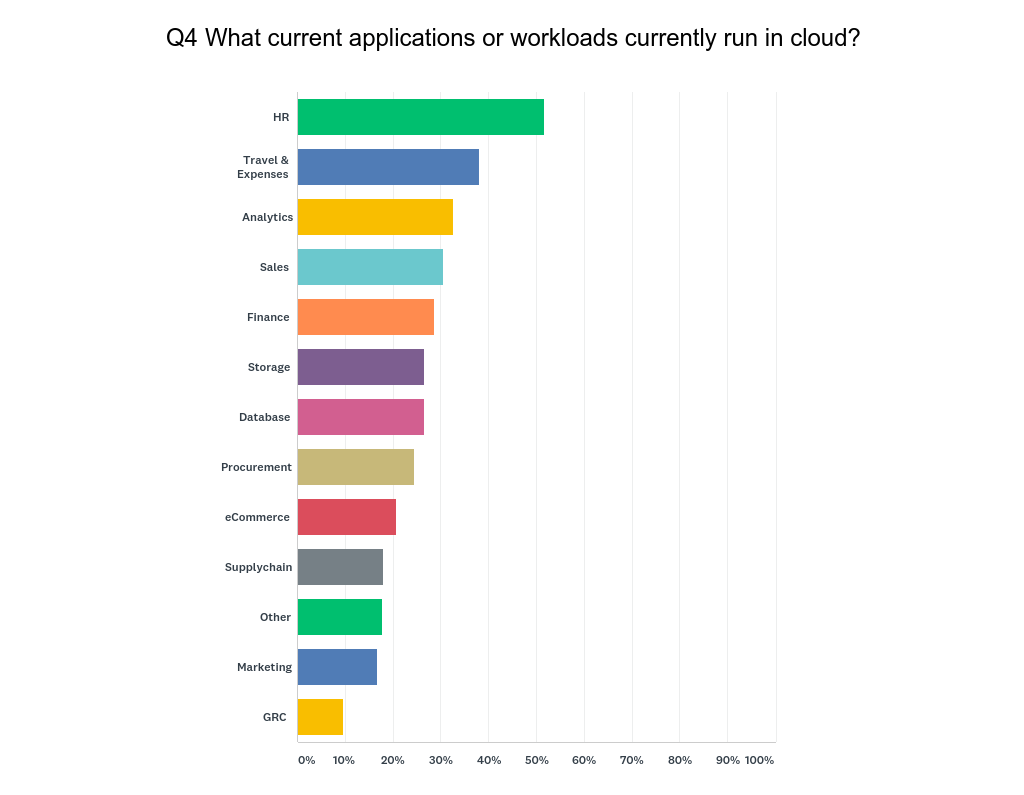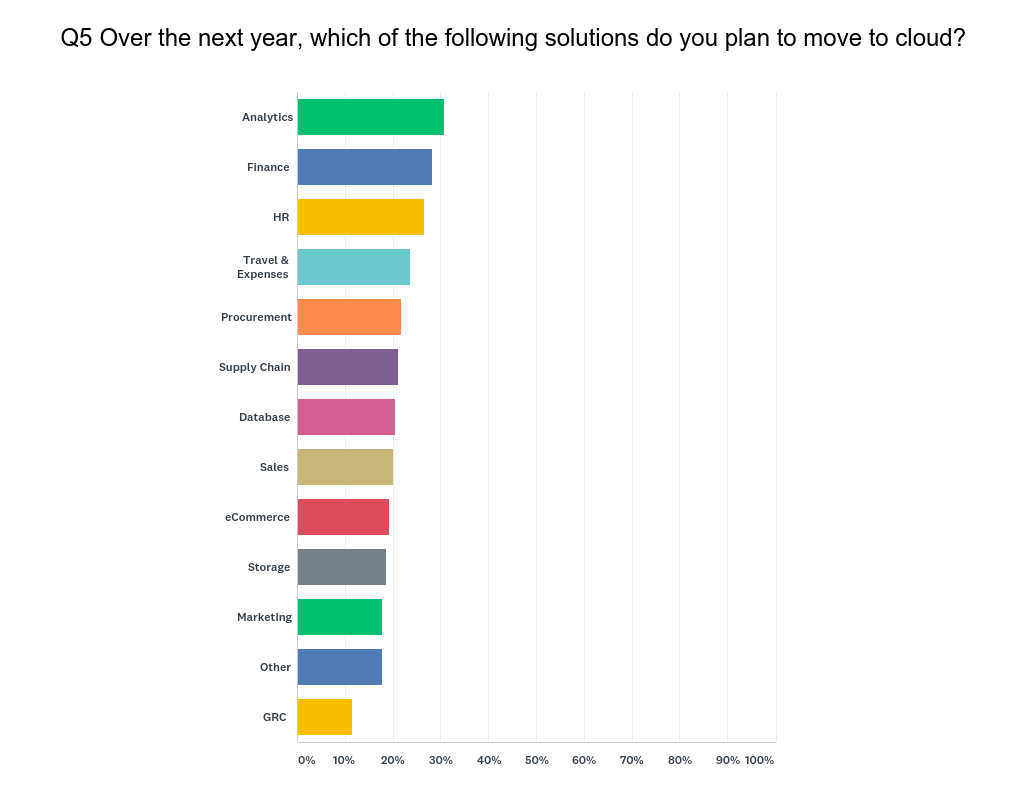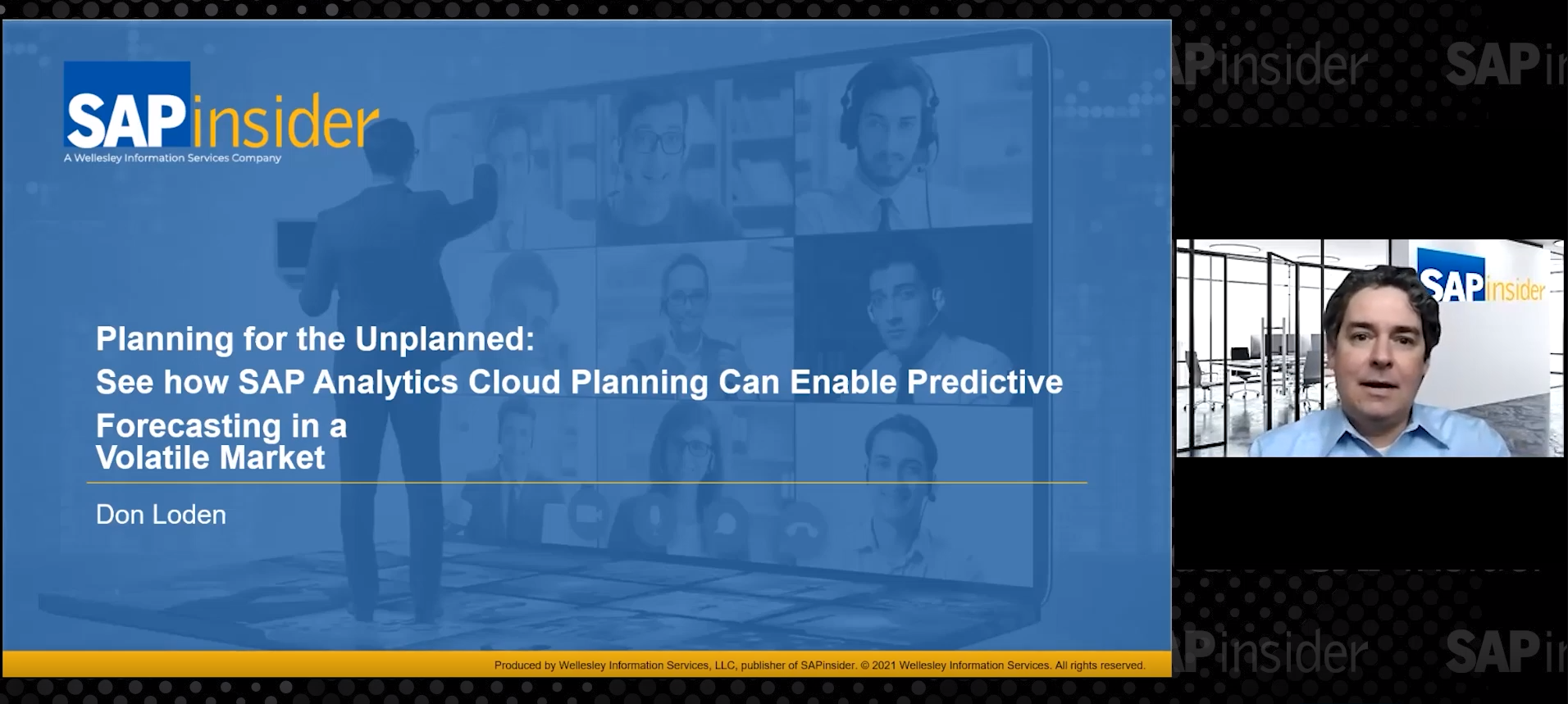Analytics in the Cloud: Moving from Hype to Reality
Cloud has gone swiftly from buzzword to reality in most enterprise organizations. But while it’s being considered as a de-facto platform to support different business and technical operations — such as storage, HR, and procurement —many companies have been reluctant to deploy other types of business processes on the cloud. A recent SAPinsider survey from 2018 found that HR and Travel and Expense were the top two business processes that organizations are running in the cloud today (see figure below), followed closely by reporting and analytics processes.

However, entering in 2019, SAPinsiders seem to be more bullish on moving their analytics to the cloud. Of the respondents surveyed, 31% cited planning to move analytics processes to the cloud this year, which leads all the business process categories (see figure below). The availability of analytics technology from both SAP and third parties is helping to drive this trend — assisted by the fact that business users and the IT teams that support them have become more familiar with and willing to embrace analytics in the cloud.
Explore related questions

What Does It Take to Get to the Cloud?
While customers see the value and opportunity in bringing their analytics strategy to the cloud, there is still work to be done to preserve their current investment in business intelligence (BI) and analytics. SAP applications and infrastructure for BI and reporting has been around for decades. The major question on customers’ minds is how easy or difficult is it to migrate to and support analytics in the cloud?
SAPinsider sat down with long time SAP BI partner APOS to talk about this migration and get their take on some of the challenges and opportunities of moving analytics to the cloud, and specifically any considerations pertaining to those customers running SAP HANA.
One focus area for APOS has been easing the migration for the vast majority of SAP customers that are using traditional SAP BusinessObjects reporting and BI solutions. These solutions have unique architectures and technologies that you need to pay close attention to, reports APOS. One such area includes the concept of “Universes”, which should be quite familiar to those individuals who work with SAP BusinessObjects solutions. Simply stated: Universes are the semantic layer that sits between the actual business data and the user’s front-end reporting tools. The benefit of the Universe is that it hides the complexities of data models and data relationships by encapsulating them in easy-to-understand-and-manipulate objects. Universes use business terms to describe the data so it makes more sense to the business user or report developer.
When customers want to adopt SAP Analytics Cloud in combination with their current or upcoming SAP HANA deployment, the question of where to host the data modelling is an important one. While the BI Universe modelling is available and accessible, hosting the modelling within SAP HANA provides performance and functionality gains, and ongoing system flexibility benefits. However, porting the BI data modelling to be SAP HANA-based modelling requires significant rebuilding and recoding of existing BI modelling work. “The logic is built into the universe so, in a sense, critical value gets trapped in that universe,” describes Alan Pym, COO at APOS.
Knowing that many SAP customers are evaluating moves to both SAP Analytics Cloud and SAP HANA, APOS is focused on anticipating the challenges of this unique migration. That’s why they developed and recently released their Universe Modelling Migration Accelerator (UMMA). The concept of UMMA is that it captures both the data modelling logic and connections from the traditional SAP BI Universe and can replicate that logic into an SAP HANA environment that can be accessed by SAP Analytics Cloud.
This type of automation can speed the migration process as well as reduce errors. Companies can also maintain access to both environments during the transition enabling project teams to perform more gradual migrations without losing access to the existing data and BI environment. Organizations can access both SAP HANA and traditional SAP BusinessObjects or SAP BI data sources from SAP Analytics Cloud. Conversely, post migration, it is still possible to access SAP HANA views from inside traditional SAP BusinessObjects solutions such as SAP BusinessObjects Web Intelligence.
So given both the benefits and challenges of moving reporting and analytics to the cloud, this means the following for SAPinsiders:
- Understand the extent to which you rely on Universes: If you are like many large enterprise companies, you are likely using a few different front-end reporting tools and data sources. Each BI environment handles data models a bit differently, and Universes are particularly unique. If you have built a lot of different Universes and are planning a move to SAP Analytics Cloud as well as SAP HANA, you’re likely to benefit and need a migration utility.
- Embrace your cloud BI rebels and learn from them: Shadow IT can be a dirty word, but you have a chance to use it to your advantage. A portion of your business users have probably downloaded and are utilizing some sort of cloud-based analytics. Instead of ostracizing them, seek to learn from them. Understand why they are partial to the tools they are. Find out what these solutions are providing that they don’t believe your traditional BI tools can. Sometimes they just need to be educated about the solutions already at their disposal. You’ll also learn a bit more about what it takes to support and integrate their ideal platform.
- Appoint a cloud migration resource and tool czar: In any migration, many companies focus a ton on the project’s challenges, but don’t spend a lot of time learning the shortcuts, resources, and tools to help them out. There are many partners like APOS out there studying the migration challenges and landscapes deeply and developing specific solutions to help companies ease their transition. SAP is also putting out resources and utilities to help customers with their transitions. Not every tool is for everyone, but by becoming much more familiar with these accelerators, you can potentially save time and money. By having someone focus on understanding this landscape and bringing them to the project team, you’ll at least have a running start on resources that can add value.
SAPinsider is delving deeper into these questions — where are SAP customers on their enterprise analytics maturity curve and what analytics solutions are they investing in? — in an upcoming research report. For more information and or if you have any questions or feedback for us on this article, please contact us at rizal.ahmed@wispubs.com or lauren.bonneau@wispubs.com and follow us on twitter at @sapinsider.







